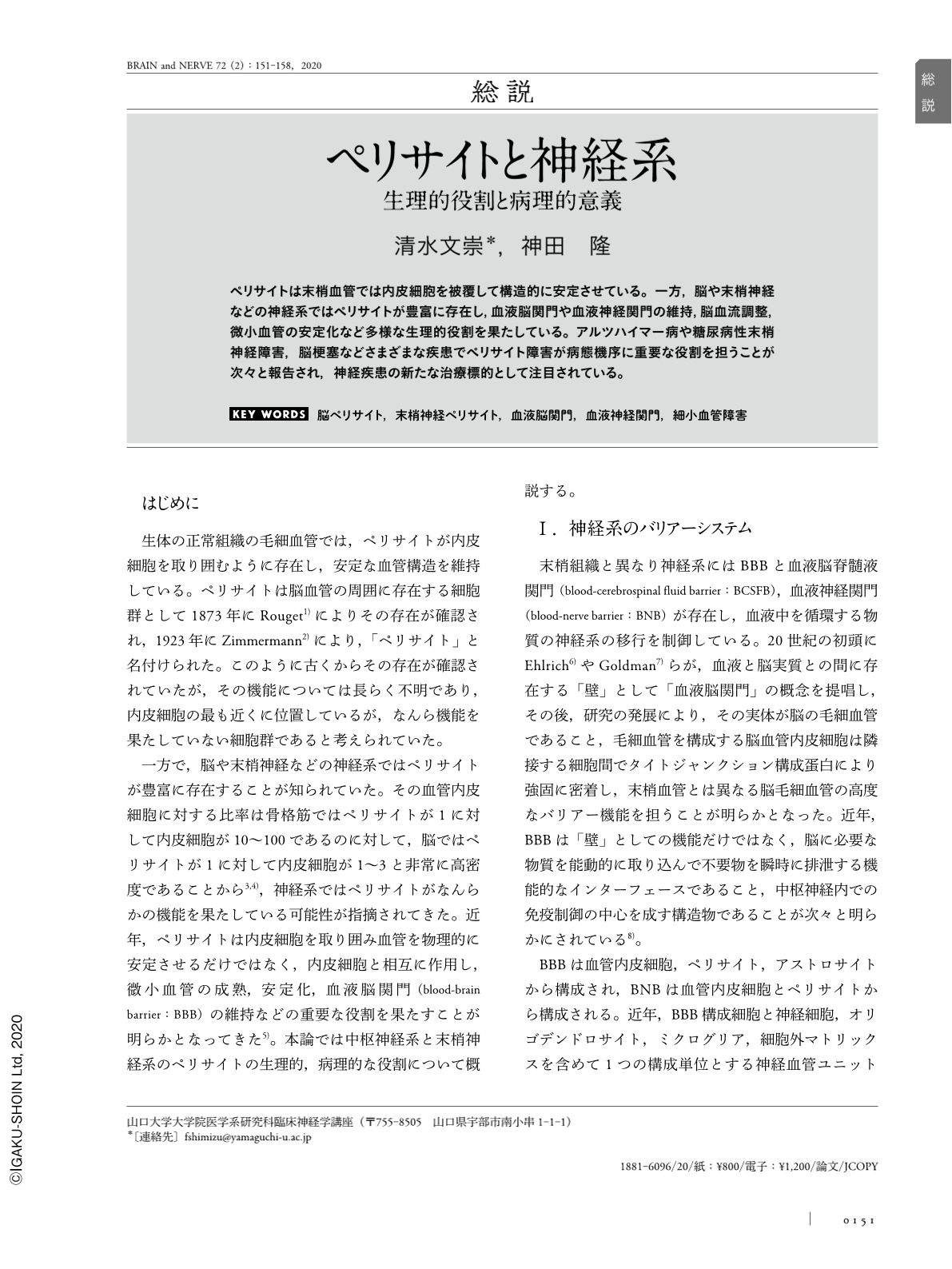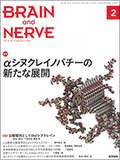Japanese
English
- 有料閲覧
- Abstract 文献概要
- 1ページ目 Look Inside
- 参考文献 Reference
ペリサイトは末梢血管では内皮細胞を被覆して構造的に安定させている。一方,脳や末梢神経などの神経系ではペリサイトが豊富に存在し,血液脳関門や血液神経関門の維持,脳血流調整,微小血管の安定化など多様な生理的役割を果たしている。アルツハイマー病や糖尿病性末梢神経障害,脳梗塞などさまざまな疾患でペリサイト障害が病態機序に重要な役割を担うことが次々と報告され,神経疾患の新たな治療標的として注目されている。
Abstract
Pericytes stabilize microvessels by wrapping them with their processes. They are located within the neurovascular unit between endothelial cells, astrocytes, and neurons, and interact with neighboring cells to generate diverse functional responses that are critical for central nerve system (CNS) function in health and disease. Recent evidence suggests that brain pericytes play crucial roles in regulating microvascular functions, such as blood-brain barrier properties, capillary blood flow, angiogenesis, and the entry of leukocytes into the brain. Pericytes also take part in tissue repair after CNS injury and may have stem cell-like properties. In addition, recent reports suggest that peripheral nerve pericytes, forming the blood-nerve barrier (BNB), regulate BNB function and basement membrane maintenance. Microvascular dysfunction due to pericyte degeneration initiates secondary neurodegenerative changes in the nervous system. In this review, we will first describe the origin, heterogeneity, and the physiological characteristics of pericytes. We next review possible pathological mechanisms and consequences of pericyte impairment in nervous system diseases including Alzheimer's diseases, diabetes, vascular dementia, and stroke. Finally, we will discuss how pericytes can be targeted for developing novel therapeutic approaches for treating patients with neurological disorders.

Copyright © 2020, Igaku-Shoin Ltd. All rights reserved.


